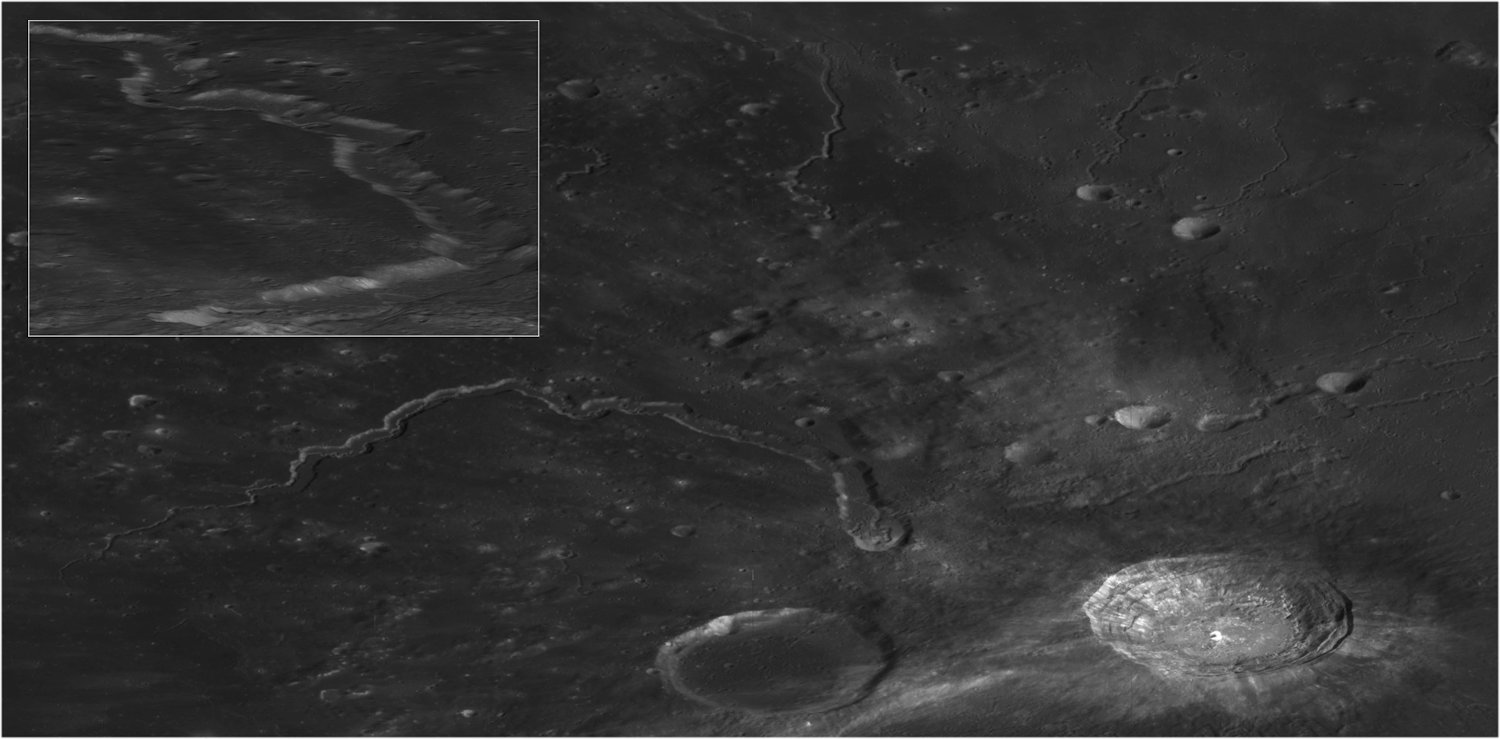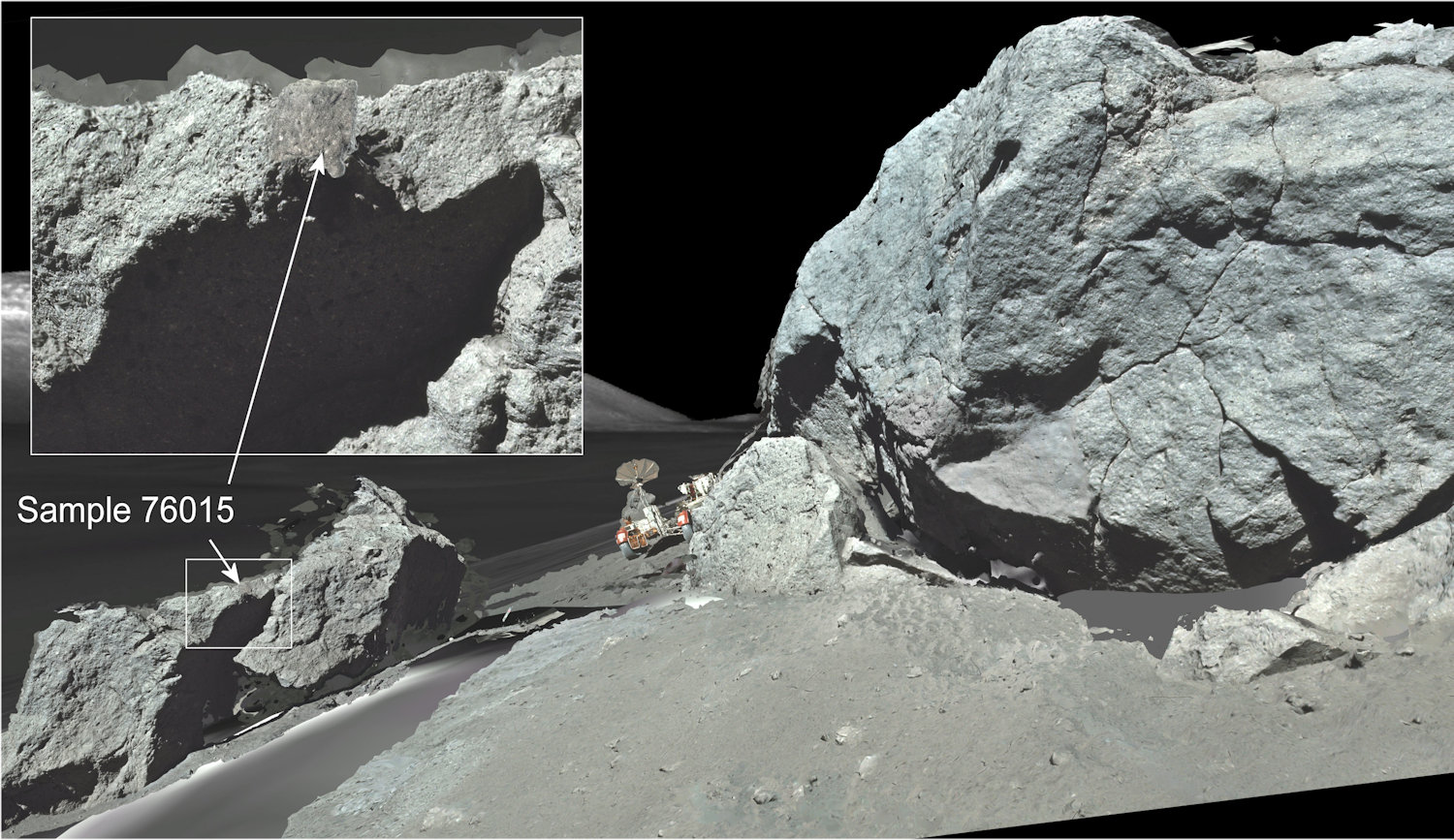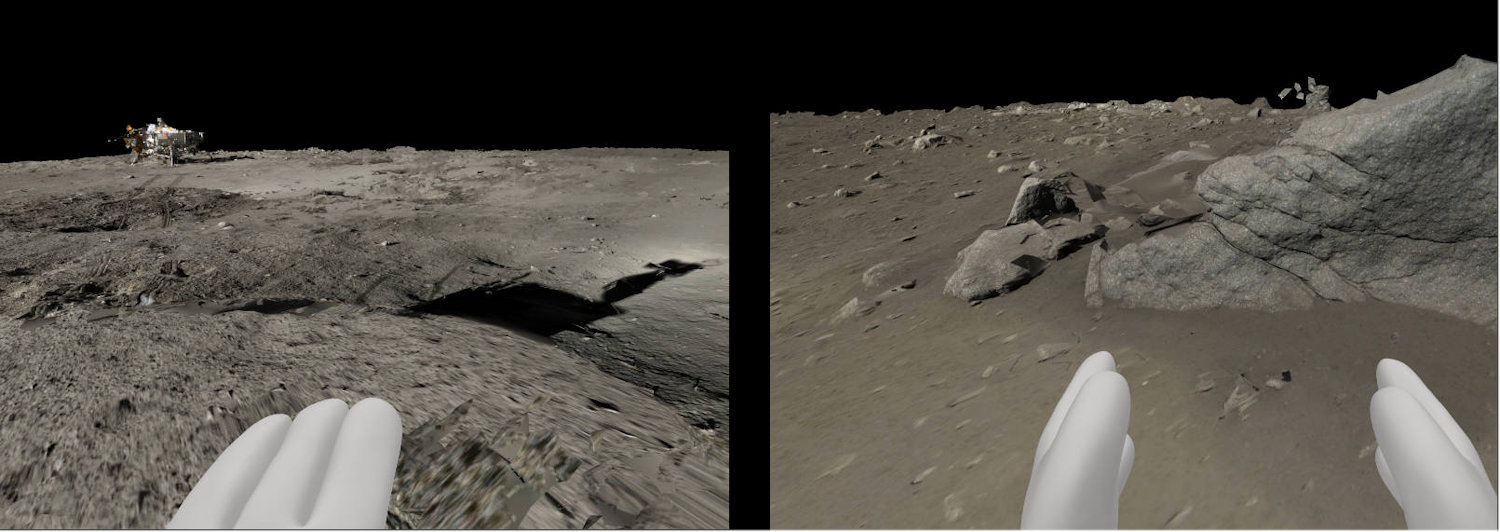- 1Laboratoire de Planétologie et Géosciences, UMR CNRS 6112, Nantes Université, Nantes, France
- 2IRAP, UMR 5277 CNES, UPS, CNRS, Toulouse, France.
- 3OSUNA, Nantes, France
When coupled with 3D techniques such as photogrammetry or stereoscopy, Virtual and Augmented reality provide new means to investigate planetary surfaces [1]. These immersive rendering systems can be used for either outreach, education, or scientific investigations. We have tested several use cases including orbital flybys derived from high-resolution images and DEMs, or in situ investigations either by humans (Apollo sites) or rovers.
Figure 1 displays an example of a VR scene that we have created with the Unity3D environment in order to fly over the Aristarchus Plateau on the Moon, using mainly Kaguya orbital imagery as input. The scene can be explored on a PC, or using a standalone wireless headset such as the Oculus Quest 2 or 3. The immersive rendering allows a close investigation of the crater morphologies (impact melt on the floor and ejecta, landslides on the crater wall, …) and of the multiple sinuous channels such as the Schröeter Valley, using a free flyover mode at several scales, from global to local.
We have also carried out a detailed investigation of in situ imagery acquired by human or robotic missions. In particular, we have recreated the station 6 geologic waypoint of the Apollo 17 mission, using photogrammetry techniques applied both to Apollo photographs of lunar boulders and to laboratory photographs of lunar rock samples retrieved from these boulders [2, 3]. 3D models of three rock samples have been replaced at their original position on their parent boulders in a Virtual Reality simulation, giving their exact context. They can be freely manipulated in a collaborative SteamVR environment (Figure 2), accessible from this address: https://steamcommunity.com/sharedfiles/filedetails/?id=2676700770). This can be useful for example to investigate rock alteration surfaces due to space weathering effects. More evolved analysis such as paleomagnetic studies could even be envisaged with such a photogrammetric approach allowing the precise localization/orientation of the samples.
Finally, the same photogrammetry technique has been tentatively applied on images of the Chinese Chang’e 3 lunar rover to setup another VR simulation, which allows to walk from the landing station up to the “Dragon rock” area (Figure 3). In this case, the 3D reconstruction is made challenging by the fact that the conditions of illumination have significantly changed during the image acquisitions. Indeed, two 360 degrees panoramas were taken in 22-23 and 24 December 2013 and two others in 12-13 January 2014 with an opposite sun angle compared to the first series, creating very different shadows. The merging of the two sets needed to increase the surface coverage therefore locally produce residual artifacts.
Both in the case of a flyover or an in situ ground investigations, one of the main advantages of using a VR system is to facilitate the data handling, to get a better sense of the scales and relationships between different units, and to freely select any point of view to investigate geomorphologic features of interest, from global to local scales. Several rendering and data integration systems can be used, such as simple web-based platform such as Sketchfab (i.e. https://sketchfab.com/LPG-3D), the steamVR workshop, or dedicated systems based on game engines such as VRExplorer.
References : [1] Caravaca et al., Planet. Space Sci, 182, 104808, 2020. [2] Le Mouélic et al., Remote Sensing, 12 (11), 2020. [3] Le Mouélic et al., Planet. Space Sci., 240,105813,, 2024

Figure 1: The Aristarchus Plateau as imaged by Kaguya and integrated into a Virtual Reality simulation allowing to freely fly over the landscape.

Figure 2: Virtual Reality simulation of the Apollo 17 Station 6 boulders and rock samples on SteamVR [3].

Figure 3: Virtual Reality simulation of the Chang’e 3 landing site derived from a photogrammetric analysis of rover images. The users can freely walk from the landing platform (left) up to the “Dragon Rock” (right). A strong opposition effect (brightening) is seen around the shadow of the rover mast (Left).
How to cite: Le Mouélic, S., Caravaca, G., Guenneguez, M., Mangold, N., and Seignovert, B.: Virtual Reality to investigate the surface of the Moon: From the Aristarchus Plateau to the Apollo 17 and Chang’e 3 landing sites, Europlanet Science Congress 2024, Berlin, Germany, 8–13 Sep 2024, EPSC2024-432, https://doi.org/10.5194/epsc2024-432, 2024.